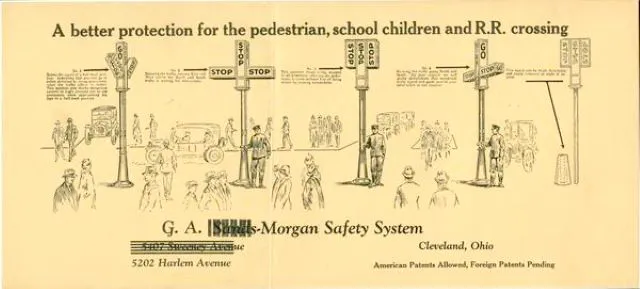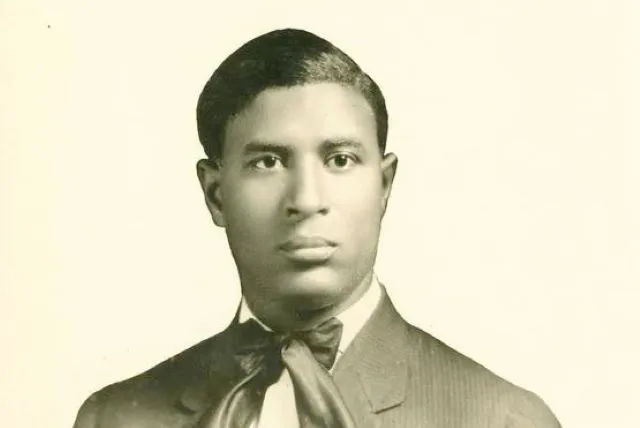Inventor of the Three-Position Traffic Signal
Garrett Morgan
Inventor of the Three-Position Traffic Signal
Some things in life are so routine that we scarcely give their origins any thought. The story of the common traffic light is as follows: The son of two emancipated slaves in Cleveland, Ohio, is credited with creating the modern traffic signal. Garrett Morgan invented various innovations that would alter civilization with nothing more than a basic education and a natural curiosity about how things work.
In 1877, Morgan was born in Kentucky. He left home when he was still a teenager and moved to Ohio in search of employment. Before moving to Cleveland, he first worked as a handyman in Cincinnati.
Cleveland had the second-largest garment industry in the nation at this time in American history, at the start of the 20th century. A clothing manufacturer hired Morgan to sweep the floors. He became fascinated by the sewing machines' mechanisms and taught himself how to repair them (they broke quite often). Before starting his own repair business, he was eventually hired as a repairman.
Morgan came up with his first significant idea by chance while working at his store. He was testing a chemical compound that kept sewing machine needles from heating up too much and scorching the fabric. Morgan cleaned his hands before heading to lunch, so the tale goes. The hair on the cloth was completely straight when he came back.
Next, Morgan tested the chemical on a neighbor's dog and then on himself. The same amazing outcomes happen every time. Whatever oils were there were able to relax and disintegrate hair filaments. G.A. Morgan's Hair Refiner was created when Morgan put the chemical in a container. With remarkable success, he distributed it to African American neighborhoods around the nation.
Morgan was free to pursue other opportunities because of his sudden financial security. The idea for a safety hood came to the inventor after he saw firefighters struggle to breathe because of smoke inhalation. The apparatus, which was granted a patent in 1914, was made up of a hood that was worn over the user's head and a long tube that extended all the way to the ground. Since hot air and smoke rise, the person would receive fresh air from the tube on the ground.
Cleveland began excavating a new tunnel beneath Lake Erie in 1916. As construction workers struck a pocket of natural gas, an explosion occurred, trapping them underneath. After learning what had occurred, Morgan and his brother put on the safety hoods and went into the tunnel. Two lives were saved because of them.
Many people believe that Morgan's safety hood served as the forerunner to the gas mask. Morgan obtained a contract with the U.S. Navy following the start of World War I and the use of toxic gas. Throughout the conflict, the hood was a required piece of gear for the American Army.
Because of his achievements, Morgan was able to acquire an automobile, which was unusual at the time (he was reportedly the first African American in Cleveland to have a car). But in the early 1900s, American streets were a mess. Navigating the roadways might be chaotic and dangerous with a mix of cars, carriages, bicycles, and pedestrians.
Morgan once again switched into problem-solving mode after seeing a tragic collision at a Cleveland junction. There were already traffic signals, but they only had two signals. Drivers had an issue in that they were unable to predict when the "go" light would change to the "stop" signal. Drivers were forced to quickly halt or remain at the junction as cars moving in the opposite direction started to move.
Morgan created a T-shaped traffic light with a third "caution" signal to address this problem. Traffic stopped moving in all directions, and intersections cleared when this signal was on. Also, it would permit pedestrians to cross before the flow of automobiles resumed.

(Photo: Western Reserve History Society, courtesy)
Morgan received a patent for a three-position traffic light on November 20, 1923. He had essentially created the yellow light. The original traffic signal prototype that Morgan created is on display at the Smithsonian Institute.
In addition to his technical advancements, Morgan played a significant role in Cleveland's African American community. He was a key figure in the Cleveland NAACP branch and started the Cleveland Call, one of the most significant African American newspapers in the nation.
Garrett Morgan passed away in 1963, the year before the Civil Rights Act was passed.
![]()
POLICE INFORMATION
If you have copies of: your Baltimore Police Department class photo, pictures of our officers, vehicles, equipment, newspaper articles relating to our department and/or officers, old departmental newsletters, lookouts, wanted posters, or brochures Information on deceased officers and anything that may help preserve the history and proud traditions of this agency Please contact retired detective Kenny Driscoll.

NOTICE
How to Dispose of Old Police Items
Please contact Det. Ret. Kenny Driscoll if you have any pictures of you or your family members and wish them remembered here on this tribute site to honor the fine men and women who have served with honor and distinction at the Baltimore Police Department. Anyone with information, photographs, memorabilia, or other "Baltimore City Police" items can contact Ret. Det. Kenny Driscoll at
Copyright © 2002 Baltimore City Police History: Ret Det. Kenny Driscoll




